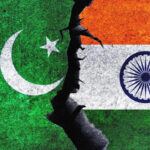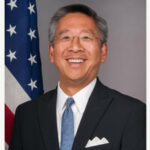After Thimpu’s demarche, Beijing includes ‘eastern sectors’ to boundary dispute.
Days after Bhutan sent China a demarche protesting Chinese claims to the Sakteng wildlife sanctuary in Eastern Bhutan, Beijing has doubled down, including Bhutan’s “Eastern sectors” to the boundary dispute between the two countries for the first time.
“The boundary between China and Bhutan has never been delimited. There have been disputes over the eastern, central and western sectors for a long time,” said the Chinese Ministry of Foreign Affairs (MFA) in a statement to the media in Beijing. The MFA was responding to questions about China’s attempt last month to stop funding for the Sakteng sanctuary from the U.N. Development Programme’s Global Environment Facility (GEF), on the grounds that it was “disputed” territory.
According to written records, there has been no mention of Eastern Bhutan, or Trashigang Dzongkhag (district), where Sakteng is based, that borders Arunachal Pradesh, in 24 previous rounds of boundary negotiations held between the two countries between 1984 and 2016. The negotiations have not been held since the Doklam standoff between Indian and Chinese troops in 2017. In July 2018, Chinese Vice-Foreign Minister Kong Xuanyou visited Bhutan, and met with the Bhutanese King, Prime Minister and other officials, but the 25th round of talks has not yet taken place. Sources said that the talks could not be held in 2019 due to scheduling difficulties, and the Coronavirus pandemic has delayed them further this year.
The Bhutanese government and its Embassy in Delhi declined to comment on the issue. Bhutan has always maintained a discreet silence on its boundary negotiations with China, and it does not have any formal diplomatic relations with Beijing. The Ministry of External Affairs too declined to comment.
The Hindu has learnt that Bhutan had issued a demarche to the Chinese embassy in New Delhi last month, protesting the Chinese statement at the GEF meeting that decides on global grants for various projects. Sakteng sanctuary has in the past too received such grants, including in 2018-2019, for a project on preventing soil erosion, without any objection from China.
‘Strong message’
“Bhutan has sent a strong message to China,” said one source, adding that Bhutan’s response was also given through the GEF council meeting where China had raised the issue. At the time, Bhutan had assumed that since the Chinese representative was not a Foreign Ministry official, but a Deputy Director General (DDG) in the Chinese Financial and Monetary Cooperation Division, the decision to stop the grant, which failed, was not thought through.
According to the GEF Council Chairman’s summary released on June 16, of the virtual meeting held on June 2-3, Aparna Subramani, the World Bank official representing Bhutan, as well as India, Bangladesh, Maldives and Sri Lanka, had said that “Bhutan totally rejects the claim made by the Council Member of China. Sakteng Wildlife Sanctuary is an integral and sovereign territory of Bhutan and at no point during the boundary discussions between Bhutan and China has it featured as a disputed area”.
“Bhutan hoped its response would close the matter,” the source added.
According to Bhutanese experts, the claim on Sakteng will open new fronts of negotiation when the next round of boundary talks are held.
“Such claims undermine the boundary talks and wild claims on either side by officials will only exacerbate issues as Bhutan too can lay claims far north,” said Tenzing Lamsang, Editor of the Bhutanese newspaper in Thimphu, in a series of tweets last week. “Ultimately Bhutan and China need to resolve its boundary disputes or such false claims will come up as a pressure tactic,” he added.
China doubles down on claims on eastern Bhutan boundary
After Thimpu’s demarche, Beijing includes ‘eastern sectors’ to boundary dispute.
Days after Bhutan sent China a demarche protesting Chinese claims to the Sakteng wildlife sanctuary in Eastern Bhutan, Beijing has doubled down, including Bhutan’s “Eastern sectors” to the boundary dispute between the two countries for the first time.
“The boundary between China and Bhutan has never been delimited. There have been disputes over the eastern, central and western sectors for a long time,” said the Chinese Ministry of Foreign Affairs (MFA) in a statement to the media in Beijing. The MFA was responding to questions about China’s attempt last month to stop funding for the Sakteng sanctuary from the U.N. Development Programme’s Global Environment Facility (GEF), on the grounds that it was “disputed” territory.
According to written records, there has been no mention of Eastern Bhutan, or Trashigang Dzongkhag (district), where Sakteng is based, that borders Arunachal Pradesh, in 24 previous rounds of boundary negotiations held between the two countries between 1984 and 2016. The negotiations have not been held since the Doklam standoff between Indian and Chinese troops in 2017. In July 2018, Chinese Vice-Foreign Minister Kong Xuanyou visited Bhutan, and met with the Bhutanese King, Prime Minister and other officials, but the 25th round of talks has not yet taken place. Sources said that the talks could not be held in 2019 due to scheduling difficulties, and the Coronavirus pandemic has delayed them further this year.
The Bhutanese government and its Embassy in Delhi declined to comment on the issue. Bhutan has always maintained a discreet silence on its boundary negotiations with China, and it does not have any formal diplomatic relations with Beijing. The Ministry of External Affairs too declined to comment.
The Hindu has learnt that Bhutan had issued a demarche to the Chinese embassy in New Delhi last month, protesting the Chinese statement at the GEF meeting that decides on global grants for various projects. Sakteng sanctuary has in the past too received such grants, including in 2018-2019, for a project on preventing soil erosion, without any objection from China.
‘Strong message’
“Bhutan has sent a strong message to China,” said one source, adding that Bhutan’s response was also given through the GEF council meeting where China had raised the issue. At the time, Bhutan had assumed that since the Chinese representative was not a Foreign Ministry official, but a Deputy Director General (DDG) in the Chinese Financial and Monetary Cooperation Division, the decision to stop the grant, which failed, was not thought through.
According to the GEF Council Chairman’s summary released on June 16, of the virtual meeting held on June 2-3, Aparna Subramani, the World Bank official representing Bhutan, as well as India, Bangladesh, Maldives and Sri Lanka, had said that “Bhutan totally rejects the claim made by the Council Member of China. Sakteng Wildlife Sanctuary is an integral and sovereign territory of Bhutan and at no point during the boundary discussions between Bhutan and China has it featured as a disputed area”.
“Bhutan hoped its response would close the matter,” the source added.
According to Bhutanese experts, the claim on Sakteng will open new fronts of negotiation when the next round of boundary talks are held.
“Such claims undermine the boundary talks and wild claims on either side by officials will only exacerbate issues as Bhutan too can lay claims far north,” said Tenzing Lamsang, Editor of the Bhutanese newspaper in Thimphu, in a series of tweets last week. “Ultimately Bhutan and China need to resolve its boundary disputes or such false claims will come up as a pressure tactic,” he added.






NO COMMENT